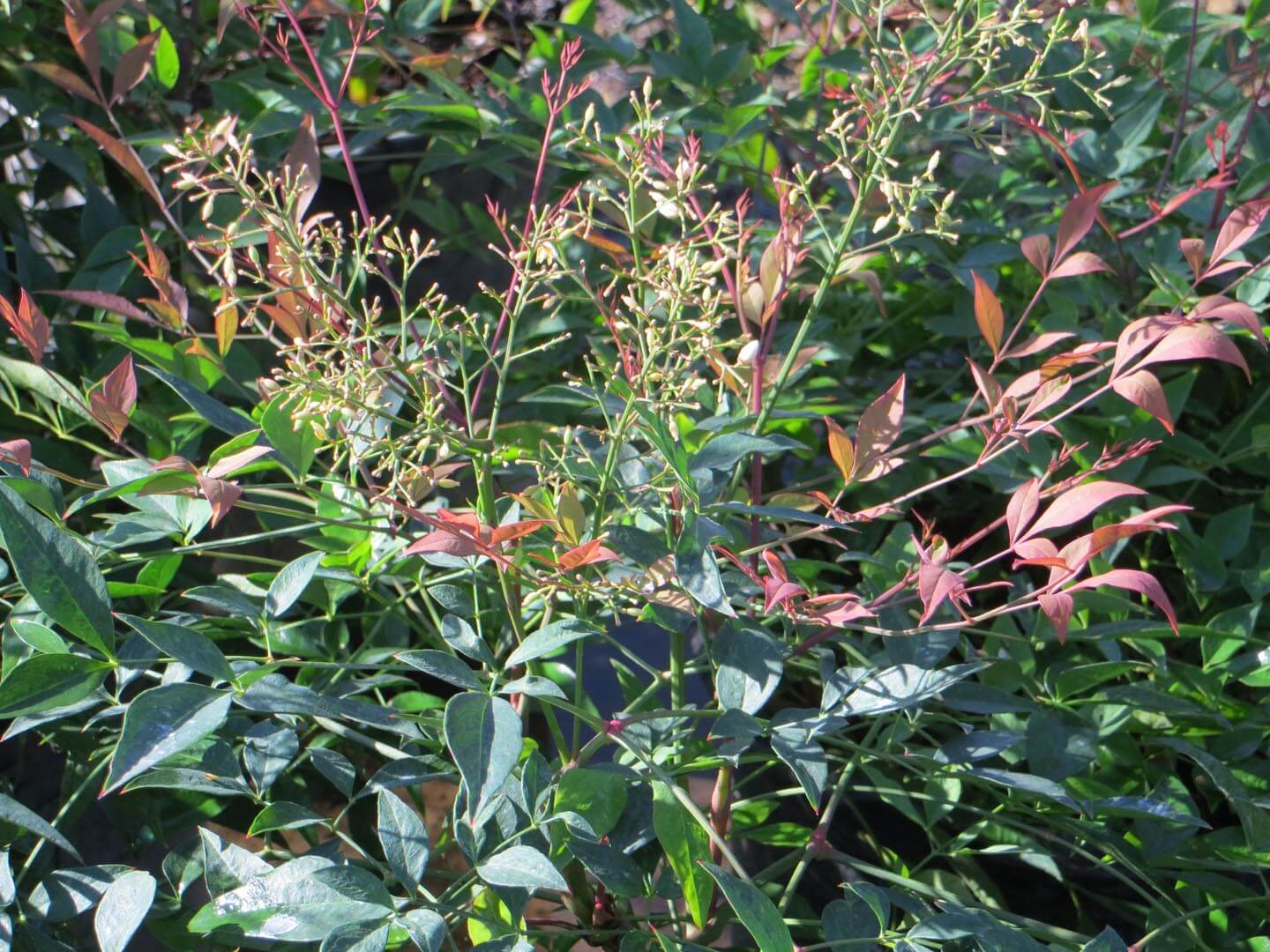

Nandina Domestica, commonly called heavenly bamboo, is a broadleaf evergreen shrub that is ornamentally grown for its interesting foliage and its often spectacular fruit display. It is native to Japan, China, and India. This is a rhizomatous, upright, evergreen shrub that typically grows to 4-8’ tall and 2-4’ wide. In St. Louis, it is semi-evergreen to deciduous and typically grows shorter since the stems often will die to the ground in winter. Although it belongs to the Barberry family, it is commonly called heavenly bamboo because its erect, cane-like stems and compound leaves resemble bamboo. Tiny whitish flowers with yellow anthers appear in late spring in loose, erect, terminal clusters. Flowers are followed by sprays of spherical, two-seeded, red berries which persist from fall to spring, providing winter interest.
Heavenly bamboo tends to invade adjacent lands including certain forested areas of the southeastern United States and naturalize therein. It is now considered to be an invasive species in some southern states. Additionally, the berries of Nandina Domestica have been linked to toxicity in cedar waxwing birds.
| Requirement | |
|---|---|
| Hardiness | 6,7,8,9 |
| Heat Zones | 6,7,8,9 |
| Climate Zones | 6, 7, 8, 9 |
| Plant Type | Shrubs |
| Plant Family | Berberidaceae |
| Exposure | Full Sun, Partial Sun |
| Season of Interest | Spring, Summer, Fall, Winter |
| Height | 1' - 2' |
| Spread | 1' - 2' |
| Water Needs | Average |
| Maintenance | Average |
| Soil Type | Acid |
| Characteristics | Showy, Evergreen |
| Garden Styles | City and Courtyard, Coastal Garden, Gravel and Rock Garden, Japanese Garden |
| Planting Place | Beds and Borders, Edging, Patio and Containers |